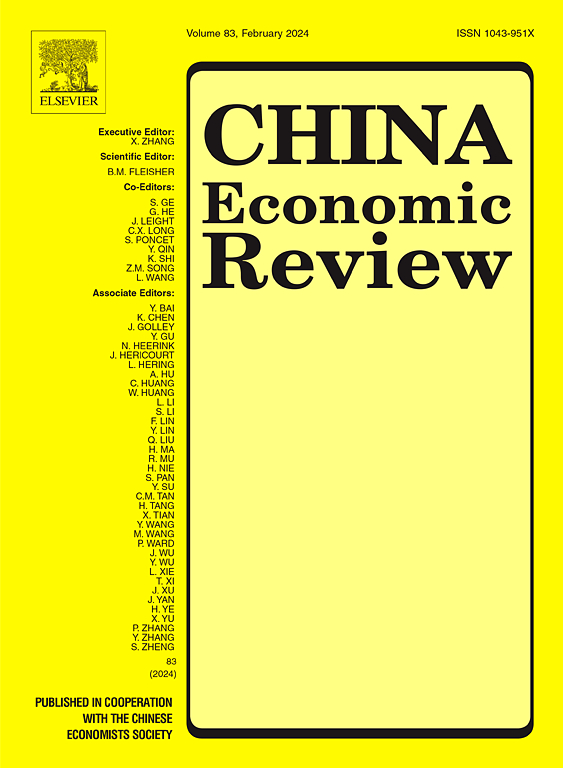Unveiling the impact and mechanism of agricultural input allocation on the income mobility of rural households: Evidence from China
IF 5.2
1区 经济学
Q1 ECONOMICS
引用次数: 0
Abstract
Income mobility is crucial in dismantling social stratification and fostering social integration. Facilitated by a balanced panel dataset comprising 792 rural households from 1986 to 2020 in Sichuan province, China, this study seeks to assess the impact of agricultural input allocation on rural households' income mobility. A multi-level differentiated polarization index is constructed to capture the dynamic characteristics of farmers' income polarization. Shapley value decomposition is used to breakdown farmers' income polarization index according to the source of income. Based on these, panel data econometric modelling is further utilized to answer the research question. It is found that optimal allocation of agricultural inputs fosters income mobility and mitigates income polarization. Misallocation in agricultural inputs, especially labour and intermediate products, substantially elevate the income polarization level for about one third of rural households. However, mediation analysis reveals that the surge in off-farm employment alters the income mobility structure by shifting the source of income polarization from agricultural income to off-farm income. Elevating the proportion of off-farm employment among rural households and accelerating agricultural socialization services can therefore help optimize agricultural input allocation and facilitate income class upgrades among rural households.
揭示农业投入配置对农户收入流动的影响及其机制:来自中国的证据
收入流动对于消除社会分层和促进社会一体化至关重要。本研究利用包含1986 - 2020年中国四川省792户农户的均衡面板数据集,试图评估农业投入分配对农户收入流动的影响。构建多层次分化指数,捕捉农民收入分化的动态特征。采用Shapley值分解法,按收入来源对农民收入极化指数进行分解。在此基础上,进一步利用面板数据计量模型来回答研究问题。研究发现,农业投入的优化配置促进了收入流动性,缓解了收入两极分化。农业投入,特别是劳动力和中间产品的分配不当,大大提高了大约三分之一农村家庭的收入两极分化水平。然而,中介分析表明,非农就业的激增通过将收入两极分化的来源从农业收入转移到非农收入,从而改变了收入流动结构。提高农户非农就业比重,加快农业社会化服务,有利于优化农业投入配置,促进农户收入等级升级。
本文章由计算机程序翻译,如有差异,请以英文原文为准。
求助全文
约1分钟内获得全文
求助全文
来源期刊

中国经济评论
ECONOMICS-
CiteScore
10.60
自引率
4.40%
发文量
380
期刊介绍:
The China Economic Review publishes original works of scholarship which add to the knowledge of the economy of China and to economies as a discipline. We seek, in particular, papers dealing with policy, performance and institutional change. Empirical papers normally use a formal model, a data set, and standard statistical techniques. Submissions are subjected to double-blind peer review.
 求助内容:
求助内容: 应助结果提醒方式:
应助结果提醒方式:


